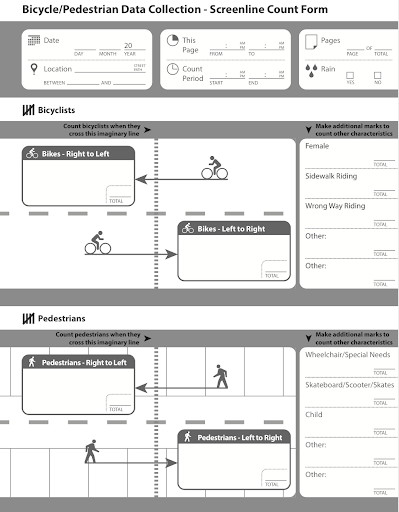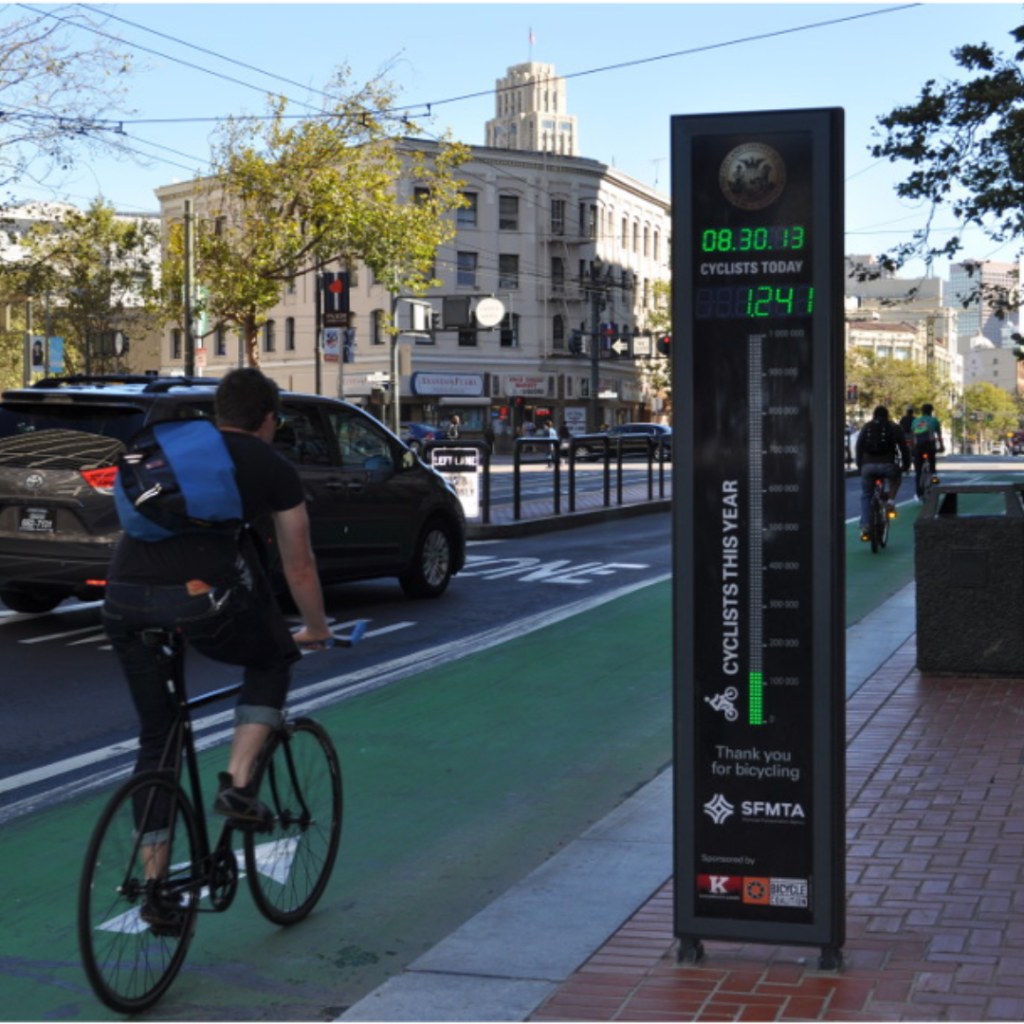DISCOVER YOUR LOCAL BICYCLING COMMUNITY
Find local advocacy groups, bike shops, instructors, clubs, classes and more!
Making Bikes Count With Bike Counts
We’ve all encountered our fair share of naysayers while advocating for a Bicycle Friendly America: “No one rides bikes,” “the bike lanes are always empty” or “bike lanes are a waste of space”. As bicycle advocates, we know this is far from the truth and it’s with data gathered through bike counts that we can prove many people ride bikes in our communities. A bike count is literally a way to count the number of riders in a given location. There are many methods and reasons for conducting a bike count and below we will explore the options that you can use to help reach your ultimate goal — build the bike infrastructure and networks to accommodate the many people in your community who are bicycling.
There are two types of bike counts: manual and automated. Manual counts are done by humans and need people to physically show up to a place to conduct counts. Imagine a person with a clipboard on a street corner. Automated counts use a machine counter, usually embedded into the street/sidewalk surface or temporarily installed on top of it using tubes or another flexible material.
How to Conduct Manual Counts
What you need to do before a count:
- Pick the location to conduct your count(s)
- Decide on the time of day to do the count (morning, noon, or evening commutes are best – automated counts will capture the shift workers’ commutes overnight)
- Find people to conduct the counts and assign them a time and location. Many communities form a volunteer count group and have the group split up into different intersection sites to cover more ground in less time. Consider offering training for your bike count volunteers, such as the Treasure Valley Cycling Alliance’s bike count program volunteer training.
- Print or develop a place to record counts (example count sheets can be seen here or the picture below). Note that the information on the side of this sheet, especially the data titled “female”, may not be relevant data to collect since you can not ask the rider how they identify. We strongly encourage you to not use this space.
- Give people instructions on how to conduct counts

Things to consider:
- Location: If you or your organization plan to make bike counts happen on a regular basis, it is important to pick locations that can be consistently tested over multiple years or iterations so that your data can tell a story over time. Doing so can justify an expansion of community bicycle improvements or help you understand where to focus efforts.
- While there are many factors that make a location good for counting, the top three locations most people use to count are your busiest cycling locations, a place where ridership exists but you want to gather more information or a place that doesn’t have any bike infrastructure but will soon and you’d like to do a comparison.
- Time: If you are using the count to make the case for bicycle infrastructure, consider what section and when the area in question is most used. Doing counts in the morning, noon, and or evening commutes to get inbound and outbound traffic is useful and to track the peak traffic times. In some situations, doing counts on Bike to Work Day is a great time to count because you know many people will be coming from many places. Most counts take place over a two-hour period.
- Weather: Counts should take place regardless of bad weather, but not if the weather is putting you or others in danger. However, it is something to note in your records and should be a factor to consider when compiling and sharing data.
During the count:
- Make sure to arrive 15 minutes before the count to get set up; Suggested items to bring are a chair, clipboard, water/snack, writing utensil, and timer.
- Decide before the count how you want to record people who are not in cars but are not on bikes, such as those on scooters, one wheels or similar variations.
- Be accurate. The goal of a count is to have data reflective of ridership in your community, not to turn in high numbers.
After the count:
- Collect the data from everyone who did a count.
- Put the data into a useable format.
- Share the data and look for a story that you can tell with it.

How to select Automated Count Devices
There are many companies out there right now that offer a variety of devices, including traffic cameras, to do counts, such as Eco-Counter, Street Light Data, and Numina. Many automated counters support pedestrian and bicycle counts and have a variety of display options that usually send data directly to an online data portal. When selecting a device consider where it will be located, the type of information you want to collect, budget, and weather. Most counters can work in extreme heat and cold and can be embedded into the asphalt so street cleaning and snow removal can still happen.
No matter why or how you decide to collect bike counts, it is an important part of the bike advocacy process. Having reliable, consistent data will help to tell a story, reflect what is actually going on in a community, and can help to make informed decisions backed by data.
Last year, Treasure Valley Cycling Alliance and the City of Charlottesville, Virginia, made a big splash with their bike count data by being the winners of the ‘Bikes Count’ Data Competition, hosted by the League and Eco-Counter. Along with winning an expert cleaning, analysis, and visualization of their bike data, both got to share the impact conducting bike counts has had on better understanding and advocating for bicycling in their communities. Applications for the 2022 ‘Bikes Count’ Data Competition are open until June 30th. Learn more and apply now!
For a deeper dive into more aspects of bike counts, check out these webinars:
- Webinar: Collecting and Applying Bike Data: Current and Future Trends
- Webinar: Doing More with Bike Data
- Webinar: How To Make Your Bike Data Count
- Webinar: Bikes Count on Campus: Using Data To Support Bicycle Friendly Universities
- Webinar: So You Have Bike Data, Now What
- Webinar: Doing More with Bike Data
Find more bike count resources for communities on our BFC resources page and for campuses on our BFU resources page.